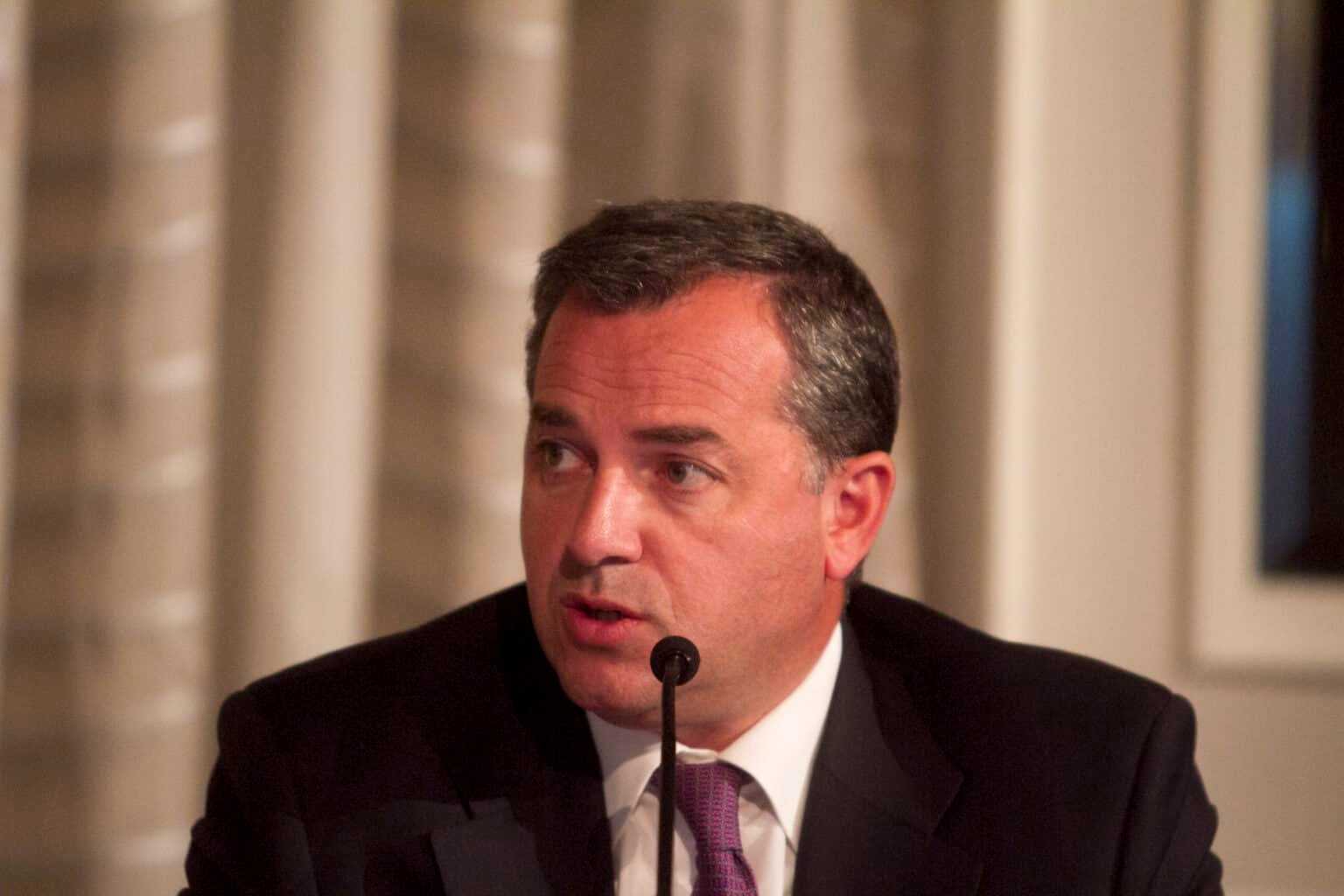Much of the focus on the IMO 2020 regulation – which limits the sulfur content of fuel used on ships and their emissions to 0.5 percent starting January 1, 2020 – has been on consequences for tanker and container-ship profitability.
But the fallout is much more pervasive than that. Dry bulk shipping will see major effects as well, asserted top executives of Safe Bulkers (NYSE: SB), Star Bulk (NASDAQ: SBLK) and Scorpio Bulkers (NYSE: SALT) during a Capital Link webinar on July 9.
According to Scorpio Bulkers president Robert Bugbee, “The most obvious effect is that it is going to create a differentiation between those vessels that have lower fuel consumption than their sisters, as fuel pricing is going to be higher, and between those vessels that have scrubbers installed and those that don’t, because the cost of high-sulfur fuel [usable on a scrubber-fitted ship] will be considerably lower.”
IMO 2020 allows vessel owners to continue to burn high-sulfur fuel if they install a scrubber that removes the sulfur from stack emissions.

Owners of dry bulk ships, particularly larger bulkers, are being aggressive in their scrubber investments. It has been estimated that between one-quarter and one-third of Capesizes – bulkers with capacity of 100,000 deadweight tons (DWT) or more – will have scrubbers installed. Scorpio Bulkers and Star Bulk are installing scrubbers on their entire fleets; Safe Bulkers is spending around $50 million to install scrubbers on a portion of its fleet.
How will this affect shippers of iron ore, coal, grain and other dry bulk commodities?
Spot versus time-charter contracts
The first change involves the type of contract used to move the cargo. The dichotomy between scrubber-fitted ships and non-scrubber ships is already altering the mix of bulkers in the spot voyage market – featuring a contract in which the cargo shipper pays a rate in dollars per ton of cargo and does not pay for fuel – and the period time-charter market, in which the cargo shipper pays a rate in dollars per day and pays for fuel on top of that.
In the run-up to the IMO 2020 deadline, there will be fewer bulkers available for time charters because owners do not want to put scrubber-fitted ships on employment contracts that have maturities extending beyond January 1, 2020.

The reason is that the spread between the cost of high-sulfur fuel oil (usable by scrubber-fitted ships) and ultra-low-sulfur complaint fuel (required for non-scrubber ships) is still unknown, making it very difficult to determine the fair time-charter rate.
“Most of the ship owners will have a lot of ships in the spot market now, because it would be silly to tie them up on period charters of one or two years before we know the spread,” said Polys Hajioannou, chief executive officer of Safe Bulkers.
When the spread is known, the time-charter negotiations can commence on the basis of how much of the savings from scrubbers will go to the time charterer, and how much will go to the ship owner.
“I don’t think there will be a clear picture on the spread before October at the earliest, so I wouldn’t touch anything before then or fix [charter] any ship before October for any period. We have had some approaches in the last couple of months [on time charters], but since we don’t know what the spread will be, there’s no basis for discussion,” said Hajioannou.

Even after the spread is known – and many are predicting it could be as high as $150-300 per ton of fuel – dry cargo shippers may be compelled to transport goods on a spot basis because ship owners will seek to put all of the fuel savings from scrubbers into their own pockets, because they need to cover the cost of installing the scrubbers.
“Essentially, we intend for our entire fleet or as near to the entire fleet as we can arrange to be on [spot] voyage charters as of the beginning of 2020,” said Hamish Norton, president of Star Bulk. “The fuel will be our expense and the fuel savings will be our benefit.”
However, it appears unrealistic that all scrubber-fitted bulkers can remain in the spot market indefinitely. “Some ships will try to keep in the spot market to take the maximum advantage [of scrubbers], but this is not always possible. For example, the Panamax and post-Panamax markets are time-charter-oriented,” said Hajiouannou. Panamax bulkers have capacity of 65,000-90,000 DWT, post-Panamaxes 90,000-100,000 DWT.
According to Bugbee, “There is a temptation on our side [the ship-owning side] to increase the number of vessels on spot [due to IMO 2020]. But you can’t have a situation where you have a whole bunch of companies that are just going to be focused on the spot market and customers who normally do time charters decide, ‘Well, we’re just not going to do time charters.’
“Eventually, the time-charter market has to adapt to each vessel’s fuel efficiency and when it does, time charterers will clearly pay more for vessels with higher performance,” he predicted.
Bulk shippers should expect to pay more
Whatever the mix between spot and time charters, and whatever the market share between scrubber-fitted ships and non-scrubber-fitted ships, the primary message to shippers from bulk vessel owners is that IMO 2020 will increase their transport costs, no matter which ship or contract type is employed.
The higher cost of fuel post-January 1, 2020 is widely expected to be passed along to bulk shippers. In the container shipping sector, which is a liner business with set schedules, there is legitimate concern that vessel interests will have to eat some of the extra fuel costs themselves. In the dry bulk sector, that is believed to be much less likely.
If a scrubber-fitted bulker is employed under a time charter, a contract in which the shipper pays the fuel cost, the vessel owner is highly unlikely to give all of the fuel savings from the scrubber to the shipper, because again, the owner made the investment in the scrubber and needs to recoup that cost.
Hajiouannou said that vessel owners will seek to negotiate time charters in which most of the savings from the scrubbers go to the owners, not the time charterers. “If the spread is $300 [per ton between high and ultra-low sulfur fuel] you will pass some [savings] to the charterer in return for a higher charter rate. There will be some sharing with the charterer, but not at the amounts I’m hearing – 50-50 or 60-40.”
In the spot market, where the vessel interest pays the fuel bill, the shipper would still ultimately have to pay for the higher fuel cost through higher spot rates, maintained Norton.
“Let’s be clear. IMO 2020 is going to be good for every ship owner, including those who are not putting on any scrubbers. When a ship is burning low-sulfur fuel, that’s expensive fuel, and clearly the vast majority of the dry bulk fleet is going to be burning low-sulfur fuel.
“Either the rates go up, or the fleet will have to slow down,” he said, referring to the fact that reducing ship speed has an exponential effect on fuel savings.
Norton continued, “If the fleet slows down, not as much cargo can be carried. But there’s kind of an inflexible demand for the [dry bulk] cargo that needs to be carried. If the same amount of cargo needs to be carried, the fleet cannot slow down and the rate needs to go up to match the increase in fuel price. So, everybody [in dry bulk shipping] is going to benefit – although those with scrubbers will benefit more.”







